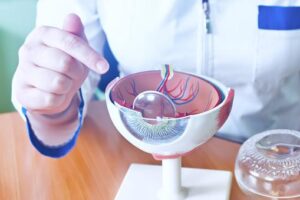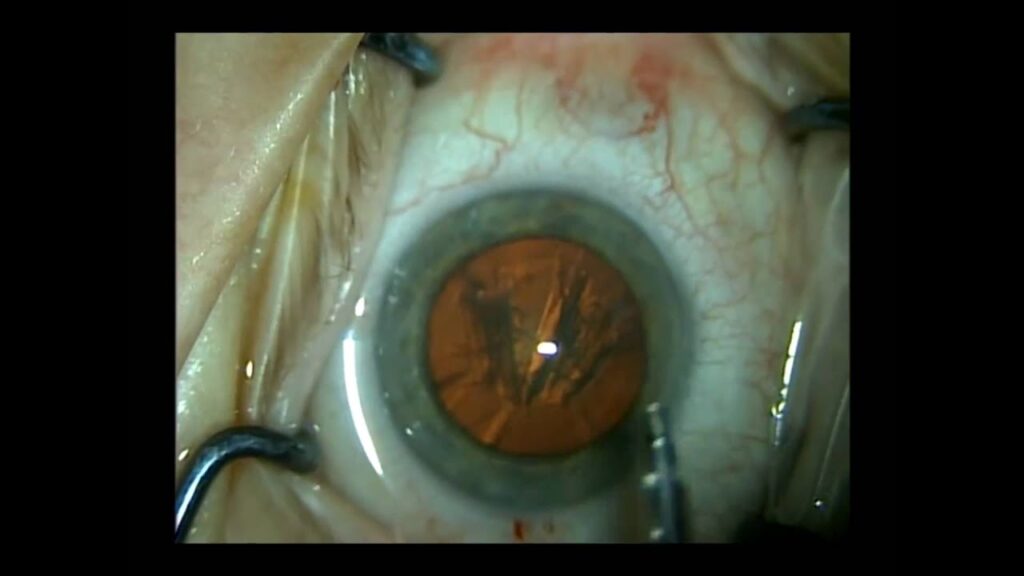
Recovery after cataract surgery is certainly one of the primary worries for patients scheduled for phacoemulsification. Cataract surgery is a very straightforward process that takes just a few minutes. Despite the fact that this is one of the most frequently done eye procedures, the majority of individuals remain fearful of the process.
As with other eye care issues, you should follow your eye doctor’s directions and surround yourself with a strong support system to speed up your recovery. Before delving into the numerous recommendations for reducing the recovery period after cataract eye surgery, it’s critical to grasp the many features of this eye problem.
What Is Cataract Surgery?
Cataract surgery is a relatively frequent practice in the Western world, owing to the high prevalence of cataracts as a natural aspect of aging. A cataract is any opacity of the lens within the eye; normally, this lens is clear and transparent, allowing light to pass through and enabling vision. Any haze or clouding on this lens obstructs light transmission, resulting in foggy or clouded vision.
When a cataract is in its early stages, it may merely result in a change in your spectacle prescription, which may be readily corrected by just upgrading your glasses. However, if the cataract advances to the point that an update in prescription can no longer restore your vision to your satisfaction, your eye care provider may prescribe cataract surgery.
Cataract surgery in Australia is linked with very high success rates, sometimes cited as high as 98 percent and a relatively smooth post-operative recovery. During the procedure, the eye region will be numbed using a local anesthetic. A tiny incision is made in the cornea, the front surface of the eye, to provide the surgeon access to the cataract hidden behind the colored iris.

Cataracts are one of the rare eye disorders related to aging in which the normal lens of the eye becomes hazy and opaque. This leads to vision loss that is irreversible with glasses, LASIK, or contact lenses. Cataract surgery, sometimes called phacoemulsification, is the only surgical procedure that includes replacing the damaged natural lens of the eye with an artificial lens to cure cataracts.
Success rates after cataract surgery have increased dramatically over time as a result of advancements in technology. As previously said, the process takes less than ten minutes and patients are able to return home immediately after the surgery. Cataract surgery becomes necessary when the condition begins to interfere with the patient’s everyday activities or when cataracts obstruct the treatment of other eye problems.
For example, your ophthalmologist may prescribe surgery if the cloudiness of the eye makes treating other common eye problems such as glaucoma, macular degeneration, or diabetic retinopathy more difficult.
How to Prepare for and Thrive During Cataract Surgery

Your doctor will do a thorough eye examination prior to the cataract surgery. This entails assessing the eyes in order to optimize the surgical outcome. Ophthalmologists often conduct examinations to rule out the existence of other eye diseases, such as nearsightedness and farsightedness. Additionally, the surgeon examines the size of the cornea in order to choose an intraocular lens that will restore vision.
Your ophthalmologist will begin the procedure by dilation of the pupil and anesthesia of the eye area. Additionally, a light sedative might be supplied before to the treatment to improve calm. The clouded natural lens is removed and replaced with an artificial lens during surgery. The majority of surgeons use either ultrasonic probes or laser methods.
What to Expect Following Cataract Surgery Recovery Time
While the recovery period for cataract surgery varies by everyone, you should anticipate some symptoms a few hours following the treatment. Since a result, do not be concerned if you have blurriness after surgery, as the eye will take many days to recuperate. Mild soreness is also common after the surgery. Your ophthalmologist may, however, prescribe an eye patch for protection, eye drops, and other medications to help decrease inflammation and dangerous bacterial infections.
Several days after surgery, some individuals regain normal eyesight. Once your eyesight has steadied, your eye surgeon may also suggest glasses. In such cases, the sort of glasses that may enhance your eyesight will be determined by the artificial intraocular lens placed.
Suggestions for Shortening the Recovery Period
Even though recovery time after cataract surgery is shorter than 24 hours, the following steps may assist you in achieving maximum recovery.

1. Refrain from touching, rubbing, or irritating the eye.
Due to the tiny incisions produced during the process, you may experience some grittiness or the appearance of a sand particle within the eye after cataract surgery. However, you should avoid rubbing, touching, or irritating the eye, since the symptoms will gradually subside. Additionally, avoid rubbing soap on the eye and shield your eyes from direct sunlight and foreign particles by wearing shades.
2. Abstain from rigorous activities
You should avoid strenuous activity, swimming, and heavy lifting for several weeks after the surgery. This alleviates pressure and allows your eye to relax. Additionally, avoid leaning down, sneezing, or vomiting to prevent eye strain.
3. Abstain from driving
The optimal time to begin driving after cataract surgery is dependent on a number of variables. In the majority of instances, it is determined by the severity of the ailment and the patient’s personal circumstances. Based on your specific conditions, your ophthalmologist will recommend the ideal time to begin driving.
4. Avoid dust and other irritants.
During the first few days after cataract surgery, you should avoid exposing your nursing eye to dust, wind, filth, and other irritants. As a result, you may want to consider cleaning and vacuuming your home before to the procedure.
5. Participate in post-operative examinations
While it is not required to go eye clinics the following day after the treatment, do not hesitate to visit the clinic if you experience any abnormalities. Additionally, you should schedule a checkup after one week.
Maximize the Benefits of Cataract Surgery
To maximize the benefits of cataract surgery, you should follow your ophthalmologist’s advice. Additionally, follow the suggestions above and keep an eye out for vision loss, persistent discomfort, numerous light flashes, nausea, heavy coughing, and vomiting to shorten the healing process. Additionally, you should rest to give your eye sufficient time to heal safely.

